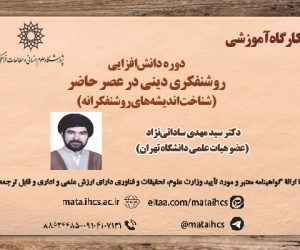ارائه مدل پیش بینی افسردگی بر اساس ترومای کودکی و احساس تنهایی با نقش میانجی کندی زمان شناختی در دانش آموزان (مقاله علمی وزارت علوم)
درجه علمی: نشریه علمی (وزارت علوم)
آرشیو
چکیده
هدف: پژوهش حاضر با هدف تدوین مدل ساختاری پیش بینی افسردگی بر اساس ترومای دوره کودکی و احساس تنهایی با نقش میانجی کندی زمان شناختی در دانش آموزان دختر متوسطه دوم شهر ایلام انجام گرفت. روش: پژوهش حاضر توصیفی- همبستگی از نوع مدلیابی معادلات ساختاری است، جامعه آماری پژوهش شامل کلیه دانش آموزان دختر دوره دوم متوسطه شهر ایلام در سال تحصیلی 1403-1402(4812نفر) بودند. نمونه پژوهش357 نفر از این دانش آموزان است که به روش نمونه گیری تصادفی خوشه ای چندمرحله ای انتخاب شدند. ابزار اصلی گردآوری داده ها، پرسشنامه افسردگی بک (1966)، پرسشنامه ترومای دوران کودکی برنستاین و همکاران (2003)، پرسشنامه احساس تنهایی آشر و ویلر (1985) و پرسشنامه کندی زمان شناختی بارکلی (2011) بود. برای تحلیل داده ها از روش مدل یابی معادلات ساختاری به کمک نرم افزارهای AMOS و SPSS استفاده شد. یافته ها: مدل ساختاری پیش بینی افسردگی بر اساس ترومای دوره کودکی و احساس تنهایی با نقش میانجی کندی زمان شناختی در دانش آموزان دختر متوسطه دوم شهر ایلام دارای برازش مطلوب است. نتیجه گیری: نتیجه گیری می شود اگر ترومای دوره کودکی و احساس تنهایی دانش آموزان با کندی زمان شناختی در آن ها همراه شود به تبع آن افسردگی بالا می رود، به عبارتی زمانی که کندی زمان شناختی در دانش آموزان دارای تجربه ترومای دوره کودکی و دارای احساس تنهایی بالا باشد می تواند افسردگی را در آن ها پیش بینی کند.Presenting a Model for Predicting Depression Based on Childhood Trauma and Loneliness Mediated by Sluggish Cognitive Tempo in Students
Aim: The present study was conducted with the aim of developing a structural model for predicting depression based on childhood trauma and feelings of loneliness, with the mediating role of sluggish cognitive tempo in secondary school girls in Ilam City.
Method: This descriptive-correlational research was based on structural equation modeling. The statistical population included all female students in the second year of high school in Ilam City during the 1402–1403 academic year (N = 4812). A sample of 357 students was selected using a multistage cluster sampling method. The main data collection tools included the Beck Depression Inventory (1966), Bernstein et al.'s Childhood Trauma Questionnaire (2003), Usher and Wheeler's Loneliness Questionnaire (1985), and Barkley's Sluggish Cognitive Tempo Scale (2011). Data analysis was conducted using structural equation modeling with AMOS and SPSS software.
Results: The structural model predicting depression based on childhood trauma and feelings of loneliness, with the mediating role of sluggish cognitive tempo, showed a good fit among second-year female high school students in Ilam.
Conclusion: The findings suggest that when childhood trauma and loneliness are accompanied by sluggish cognitive tempo, the likelihood of depression increases. In other words, sluggish cognitive tempo can serve as a mediating factor in the relationship between childhood trauma, loneliness, and depression in adolescents.







